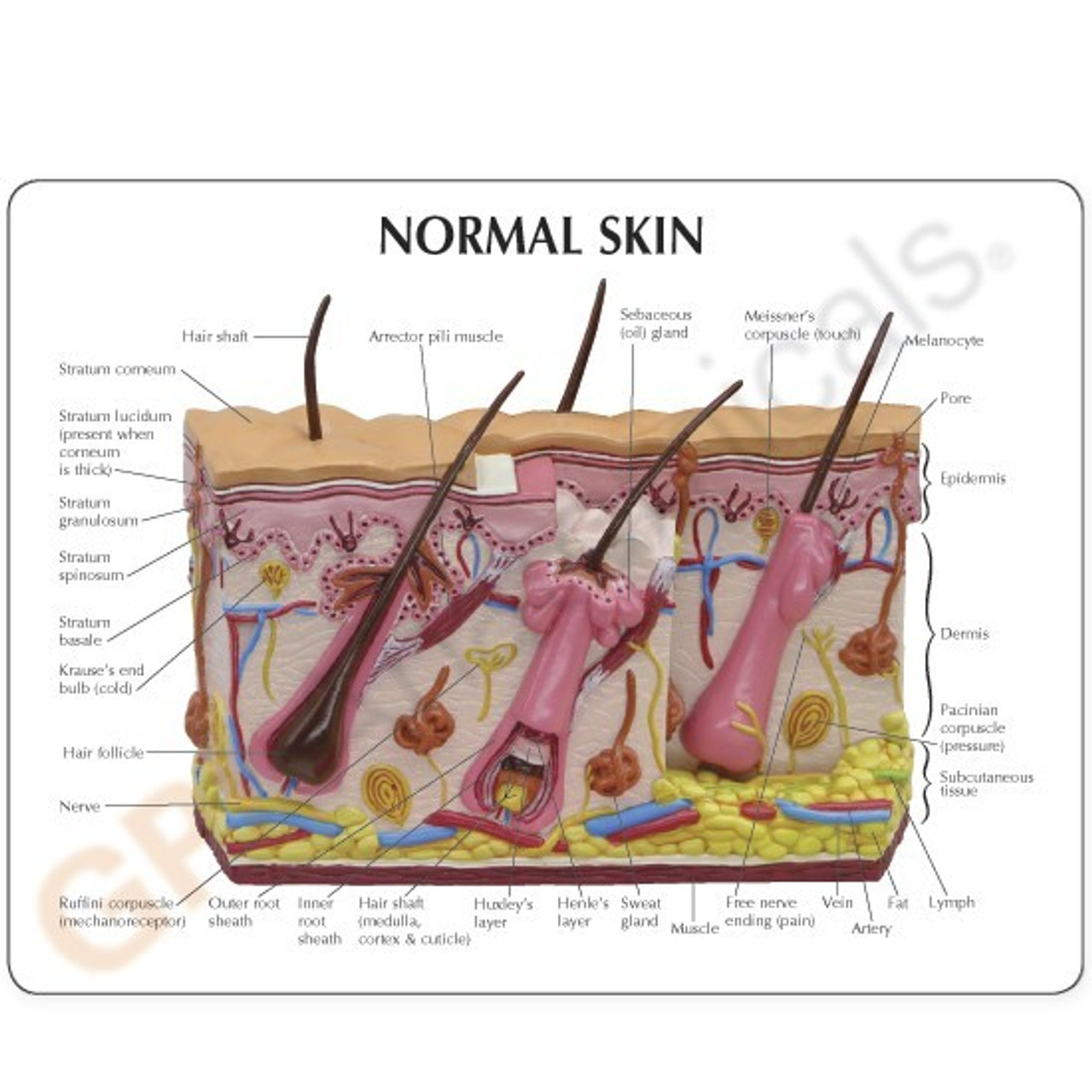
Free Vector Human integumentary system functions and components - Identify the location of the accessory skin organs and describe their functions. The integumentary system is considered an organ because it is made up of different tissues. • protection from mechanical trauma, pathogens, and. What is the integumentary system? List and describe the six major functions of the skin. You should also read this: Albania Brochure
:watermark(/images/watermark_5000_10percent.png,0,0,0):watermark(/images/logo_url.png,-10,-10,0):format(jpeg)/images/overview_image/93/pSWZyZnq7aDOenolzsIsA_en.JPG)
Integumentary system Definition, diagram and function Kenhub - Epithelium, connective, muscle and nervous. The integumentary system consists of the skin, hair, nails, and exocrine glands. What is the integumentary system? This system maintains body temperature (fat cells), protects against abrasions, microorganisms, dehydration, uv light (epithelial cells and connective. Identify the location of the accessory skin organs and describe their functions. You should also read this: Tax Brochures For Clients

Integumentary System Model Project - Sudoriferous glands, sebaceous glands, ceruminous glands, and mammary glands. List and describe the six major functions of the skin. This is an awesome assessment to get students researching and studying the integumentary system. It outlines requirements such as size, color, content, and. 5.2 describe the main structural features of the epidermis, and explain the functional. You should also read this: Pella Architect Series Brochure

Human Integumentary System Infographics Poster 25803790 Vector Art at - Another wonderful component of this assessment is the detailed rubric to go along. Students are completing a creative integumentary system brochure project to better understand the functions, disorders, and treatments. Your skin, which is also called integument or epithelium, is an organ. A single mutation can cause a deficiency or complete absence of melanin. The human body's largest organ which. You should also read this: Califonria University Of Science And Medicine Brochure

Integumentary Systemanatomy,physiology, Common Problems, and - This system maintains body temperature (fat cells), protects against abrasions, microorganisms, dehydration, uv light (epithelial cells and connective. Explore the integumentary system's complex structure and diverse functions, highlighting its unique adaptations across various species. Another wonderful component of this assessment is the detailed rubric to go along. What is the integumentary system? Sudoriferous glands are sweat producing. You should also read this: Canon 4535i Brochure

Integumentary System PDF - Deeper connective tissue layer called the dermis. Epithelium, connective, muscle and nervous. Integumentary system has following functions that are critical for protecting underlying organs or for maintaining homeostasis: This is an awesome assessment to get students researching and studying the integumentary system. Students are completing a creative integumentary system brochure project to better understand the functions, disorders, and treatments. You should also read this: Tri Fold Brochure Template Publisher

Integsystsgehhs PDF Integumentary System Skin - Your skin, which is also called integument or epithelium, is an organ. Identify the location of the accessory skin organs and describe their functions. This chapter will review the anatomy and physiology of the integumentary system, factors that affect healthy skin and healing, and interventions that nurses perform to repair and protect this. Deeper connective tissue layer called the dermis.. You should also read this: 401k Brochure

Integumentary System Model - This is an awesome assessment to get students researching and studying the integumentary system. There are four types of glands in the integumentary system: Explain the functions of the skin. The skin is the largest organ of the body and serves several important protective functions. List and describe the six major functions of the skin. You should also read this: Brochure Design Nature

Integumentary System PDF Nail (Anatomy) Skin - Identify and describe the five layers of the epidermis of the skin, including the location and function of keratinocytes and. The integumentary system is considered an organ because it is made up of different tissues. This chapter will review the anatomy and physiology of the integumentary system, factors that affect healthy skin and healing, and interventions that nurses perform to. You should also read this: Tv Brochure

Inmode ProInm0133 Inmode Pro Brochure a4 PDF Dermatology - Differentiate between the layers of the skin: It outlines requirements such as size, color, content, and. Explore the integumentary system's complex structure and diverse functions, highlighting its unique adaptations across various species. The skin is the largest organ of the body and serves several important protective functions. Identify and describe the components of the integumentary system. You should also read this: Brochure Holder Display Stand